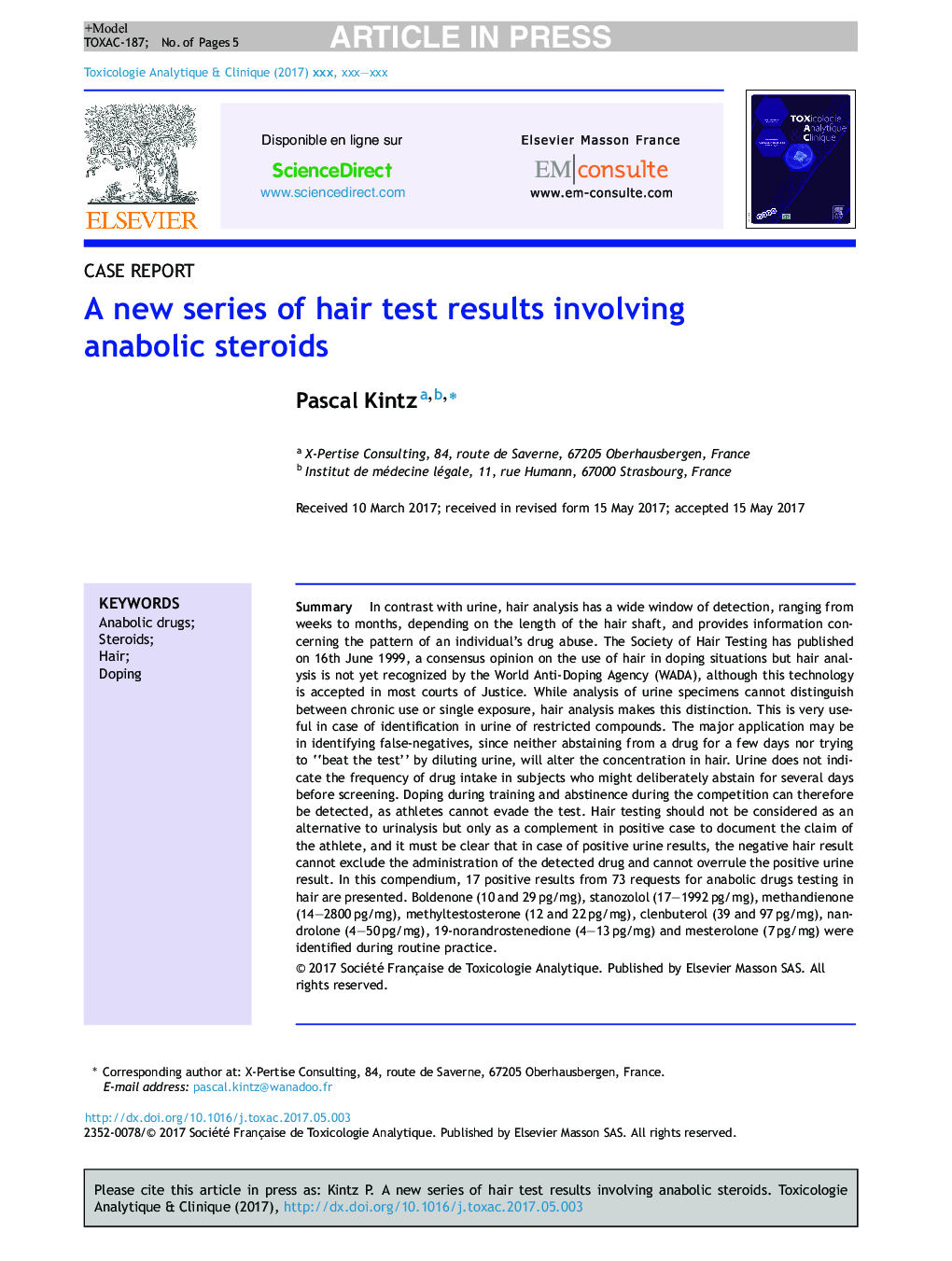| Article ID | Journal | Published Year | Pages | File Type |
|---|---|---|---|---|
| 4761389 | Toxicologie Analytique et Clinique | 2017 | 5 Pages |
Abstract
In contrast with urine, hair analysis has a wide window of detection, ranging from weeks to months, depending on the length of the hair shaft, and provides information concerning the pattern of an individual's drug abuse. The Society of Hair Testing has published on 16th June 1999, a consensus opinion on the use of hair in doping situations but hair analysis is not yet recognized by the World Anti-Doping Agency (WADA), although this technology is accepted in most courts of Justice. While analysis of urine specimens cannot distinguish between chronic use or single exposure, hair analysis makes this distinction. This is very useful in case of identification in urine of restricted compounds. The major application may be in identifying false-negatives, since neither abstaining from a drug for a few days nor trying to “beat the test” by diluting urine, will alter the concentration in hair. Urine does not indicate the frequency of drug intake in subjects who might deliberately abstain for several days before screening. Doping during training and abstinence during the competition can therefore be detected, as athletes cannot evade the test. Hair testing should not be considered as an alternative to urinalysis but only as a complement in positive case to document the claim of the athlete, and it must be clear that in case of positive urine results, the negative hair result cannot exclude the administration of the detected drug and cannot overrule the positive urine result. In this compendium, 17 positive results from 73 requests for anabolic drugs testing in hair are presented. Boldenone (10 and 29Â pg/mg), stanozolol (17-1992Â pg/mg), methandienone (14-2800Â pg/mg), methyltestosterone (12 and 22Â pg/mg), clenbuterol (39 and 97Â pg/mg), nandrolone (4-50Â pg/mg), 19-norandrostenedione (4-13Â pg/mg) and mesterolone (7Â pg/mg) were identified during routine practice.
Keywords
Related Topics
Health Sciences
Medicine and Dentistry
Forensic Medicine
Authors
Pascal Kintz,
